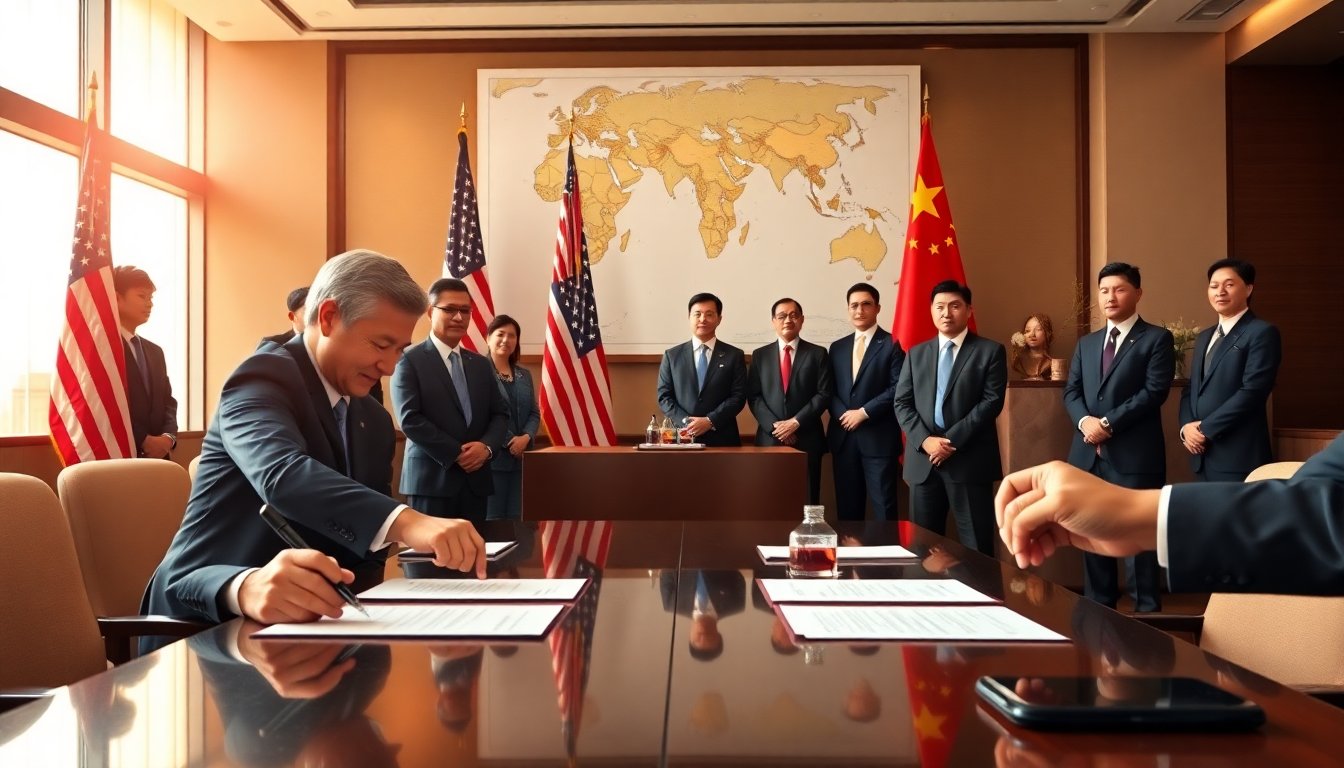Table of Contents
President Trump and President Xi Jinping announce new trade agreement
In a significant development, President Donald Trump unveiled a new trade agreement with Chinese President Xi Jinping during their recent meeting in Busan, South Korea. This meeting was their first face-to-face discussion since 2019 and was part of a wider diplomatic initiative across Asia, which also included talks with leaders from South Korea, Japan, and other Southeast Asian countries.
After a nearly two-hour meeting, Trump expressed optimism about the outcome, labeling it an “amazing meeting” and assigning it a personal rating of “12 out of 10.” Central to their agreement are tariff reductions in exchange for China’s pledge to address the trafficking of fentanyl and to resume purchases of U.S.
agricultural products.
Details of the agreement
The agreement includes a reduction in tariffs on Chinese goods, decreasing from 57 percent to 47 percent. Notably, tariffs on fentanyl precursor substances will be cut in half from 20 percent to 10 percent.
Trump expressed confidence that China would take significant steps to combat the fentanyl trade, which has substantially contributed to the increase in overdose fatalities in the United States.
Besides addressing the fentanyl issue, Xi Jinping assured Trump that China would start purchasing large quantities of U.S.
soybeans and other agricultural products immediately. In a key move, China had already made its first soybean purchases in months just days before the summit, signaling a possible improvement in trade relations.
Implications for global trade
Recent developments in the trade negotiations between the United States and China have provided a boost to global markets.
These negotiations are crucial, as they address the ongoing trade war impacting the two largest economies. The agreement has generated optimism for stability in international supply chains, which have faced disruptions due to high tariffs and trade uncertainties. Consequently, stock markets experienced a surge as investors responded positively to the potential resolution of these tensions.
However, despite the prevailing optimism, industry analysts warn that the underlying issues between the U.S. and China are far from simple. Discussions included sensitive topics such as the export of rare earth elements, an area where China holds significant influence. Analysts stress that while a framework for cooperation has been established, substantial challenges remain, particularly regarding the geopolitical dynamics between the two nations.
Future considerations
During discussions, both leaders acknowledged that periodic frictions are likely in the relationship between the superpowers. Xi emphasized the importance of maintaining a constructive dialogue moving forward. He expressed a willingness to collaborate with Trump to establish a solid foundation for future relations.
While the immediate outcomes seem favorable, analysts caution that the risk of miscommunication looms over any international agreement. Concerns exist that domestic political pressures could prompt either side to reverse concessions if circumstances shift. Therefore, maintaining communication and managing expectations will be crucial in the coming months.
New chapter in U.S.-China relations
The recent meeting between former President Donald Trump and Chinese President Xi Jinping marks a significant moment in U.S.-China relations. Both leaders have acknowledged the importance of cooperation to avoid escalating tensions into a trade war. This acknowledgment suggests a shift towards a more collaborative approach.
As Trump prepares for upcoming negotiations, the global community is poised to observe the developments closely. The outcomes of these discussions could have far-reaching implications, not only for bilateral trade but also for economic strategies and alliances throughout the Asia-Pacific region.





